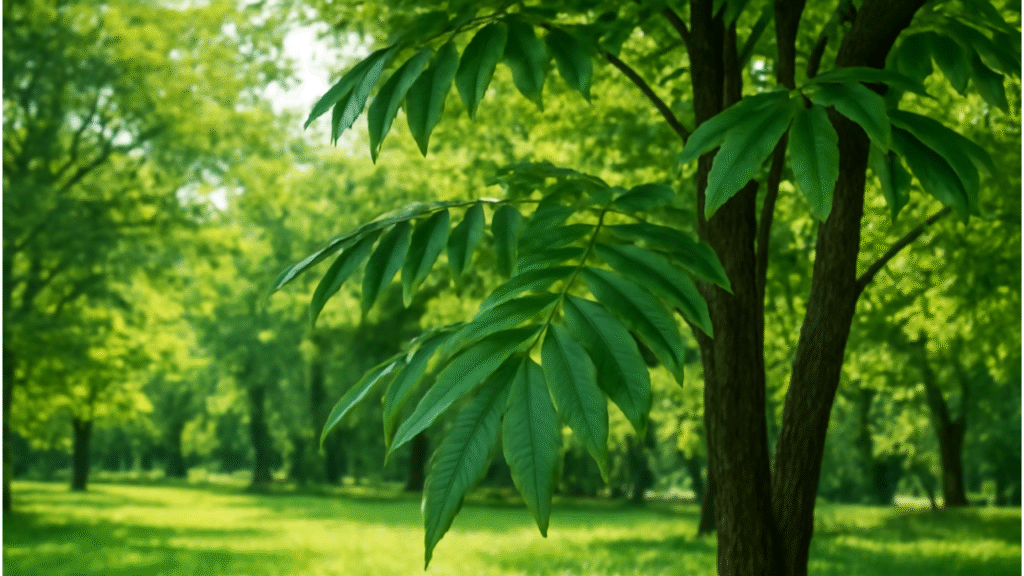
Hickory Tree Leaves Identification: A Complete Guide to Recognizing and Differentiating Hickory Trees
Have you ever found yourself standing in front of a tree, unsure whether it’s a hickory or something else? 
In this comprehensive guide, we’ll walk you through everything you need to know about identifying hickory tree leaves, making it simple and enjoyable to spot these stunning trees in your backyard or local park. From leaf shape and size to seasonal changes, we’ll cover the essential characteristics that set hickories apart from other species.
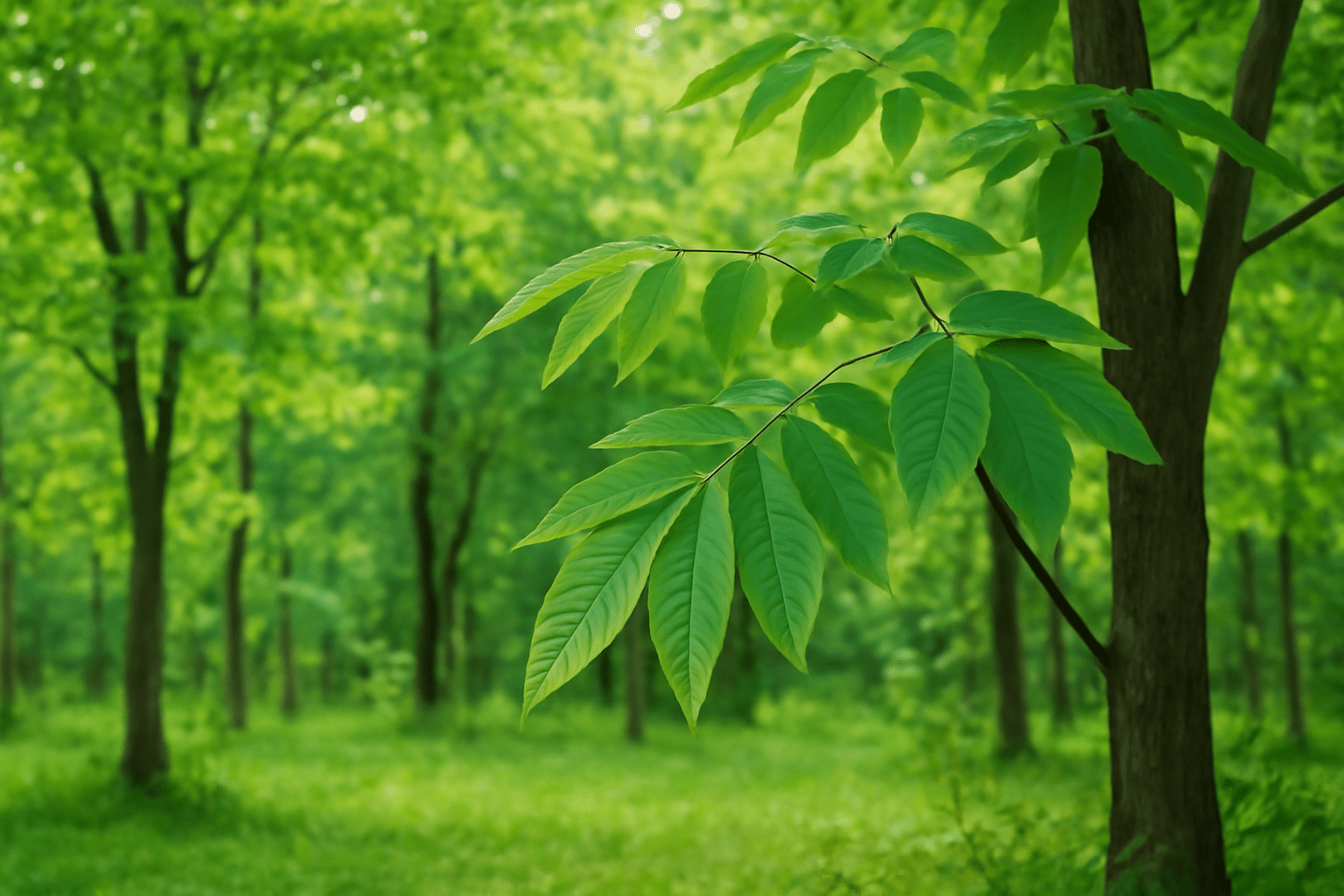
By the end, you’ll be equipped with the knowledge to confidently identify hickory trees every time. Ready to become a tree-identification pro? Let’s dive in!
Table of Contents
Toggle Why Identifying Hickory Tree Leaves Is Important
Why Identifying Hickory Tree Leaves Is Important 
Identifying hickory tree leaves might seem like a small task, but it holds significant value in both the natural world and your everyday life. 

 1. Boost Your Knowledge of Nature
1. Boost Your Knowledge of Nature 
By learning how to identify hickory tree leaves, you deepen your understanding of the natural world around you. Whether you’re hiking, gardening, or just walking through your neighborhood, knowing your trees helps you connect more with the environment 
 2. Practical Uses in Woodworking and Landscaping
2. Practical Uses in Woodworking and Landscaping 
Hickory wood is one of the most durable types around, and its leaves can provide insights into the tree’s age and health. This is especially valuable for those into woodworking or landscaping, as it helps in selecting the right trees for projects. 
 3. Contributing to Environmental Health
3. Contributing to Environmental Health 
Tree identification is an essential skill for environmental conservation 
 4. Enhance Your Gardening and Landscaping Skills
4. Enhance Your Gardening and Landscaping Skills 
Hickory trees have unique characteristics that make them stand out in landscaping. Recognizing them can give you an edge when designing gardens, parks, or even urban spaces 
In short, learning hickory tree leaves identification goes beyond just knowing the tree’s name. It opens doors to better understanding your environment, making informed choices in gardening or woodworking, and even contributing to environmental efforts. Ready to dive deeper? Let’s get started!
 Key Characteristics of Hickory Tree Leaves
Key Characteristics of Hickory Tree Leaves 
Identifying hickory tree leaves becomes much easier once you know what to look for. Let’s break down the key features that make hickory leaves unique:

 Shape and Size
Shape and Size 
- Long, Narrow Leaves with a Pointed Tip: Hickory leaves are elongated, with sharp, pointed tips that give them a sleek, distinctive look.
- Serrated Edges: The edges of the leaves are finely serrated, which is a hallmark of hickory trees. These jagged edges help distinguish them from other tree species.
- Size: Typically, hickory tree leaves range between 6 to 10 inches long. Their substantial size adds to their unique appearance and makes them stand out among other trees.
 Leaf Arrangement
Leaf Arrangement 
- Alternate Arrangement: Hickory trees have leaves that grow alternately along the branch, not opposite each other. This helps in recognizing the species when the tree is in full leaf.
- Pinnate Compound Leaves: Each hickory leaf is actually made up of several smaller leaflets (usually 5 to 9), which are attached to a central stem (called a rachis). This compound structure is key to identifying hickory trees.
 Color and Texture
Color and Texture 
- Dark Green in Spring and Summer: During the growing season, hickory leaves are a deep, rich green on top. This helps them stand out when surrounded by other trees.
- Rough Texture: The upper side of the leaves is rough and textured, while the underside is lighter and smoother. This gives the leaves a distinctive two-toned look.
- Fall Color Changes: As the season changes, hickory leaves turn shades of yellow to golden brown, adding beauty to your landscape.
These color changes are one of the easiest ways to spot a hickory tree in autumn.
With these characteristics in mind, identifying hickory tree leaves becomes much more straightforward. Stay tuned as we dive deeper into the different types of hickories and their variations!
 Different Types of Hickory Trees and Their Leaves
Different Types of Hickory Trees and Their Leaves 
Hickory trees come in several species, each with its own unique leaf characteristics. Here’s a breakdown of the most common types of hickories and how to distinguish their leaves:

 1. Shagbark Hickory (Carya ovata)
1. Shagbark Hickory (Carya ovata) 
- Leaflets: 5-7 large leaflets.
- Shape and Texture: The edges of the leaflets are more serrated compared to other hickory species. The leaves are typically a bit larger and have a more jagged appearance.
- Color: The leaves are a slightly darker green, which makes them stand out, especially in the summer months.
Fun Fact: Shagbark hickories are known for their distinctive, shaggy bark, but their leaves are just as unique!
 2. Shellbark Hickory (Carya laciniosa)
2. Shellbark Hickory (Carya laciniosa) 
- Leaflets: 7-9 long leaflets.
- Shape and Texture: The leaves are more elongated, with finer edges than other hickory species, giving them a more delicate appearance.
- Color: The leaves are a vibrant green during the growing season, adding to the tree’s beauty.
Distinguishing Feature: Shellbark hickories also have large, thick bark that often peels away in large strips, resembling the shell of a walnut.
 3. Pignut Hickory (Carya glabra)
3. Pignut Hickory (Carya glabra) 
- Leaflets: Smaller leaves with 5-7 leaflets.
- Shape and Texture: The leaflets are more slender and smaller compared to other hickories, giving the tree a more compact look.
- Color: The leaves are a lighter green, making Pignut hickories stand out among darker green trees.
Note: Pignut hickories are more common in upland areas and are named for their small, nut-like fruit.
 4. Mockernut Hickory (Carya tomentosa)
4. Mockernut Hickory (Carya tomentosa) 
- Leaflets: Large leaves with 7-9 leaflets.
- Shape and Texture: These leaves are thicker and denser, particularly on the underside, giving them a plush, velvety texture.
- Color: The leaves are a rich green, and the underside has a fuzzy, lighter feel, adding to their distinctiveness.
Unique Feature: Mockernut hickories are known for their hard, thick nuts, but their leaves’ dense texture is another key identifier.
By recognizing the leaf characteristics of each hickory species, you can easily identify which type you’re looking at, whether you’re hiking, gardening, or just exploring nature.
 How to Differentiate Hickory Leaves from Other Trees
How to Differentiate Hickory Leaves from Other Trees 
Identifying hickory tree leaves can sometimes be tricky, especially since they share similarities with other common tree species. Here’s a guide to help you differentiate hickory leaves from oak, walnut, and ash tree leaves:
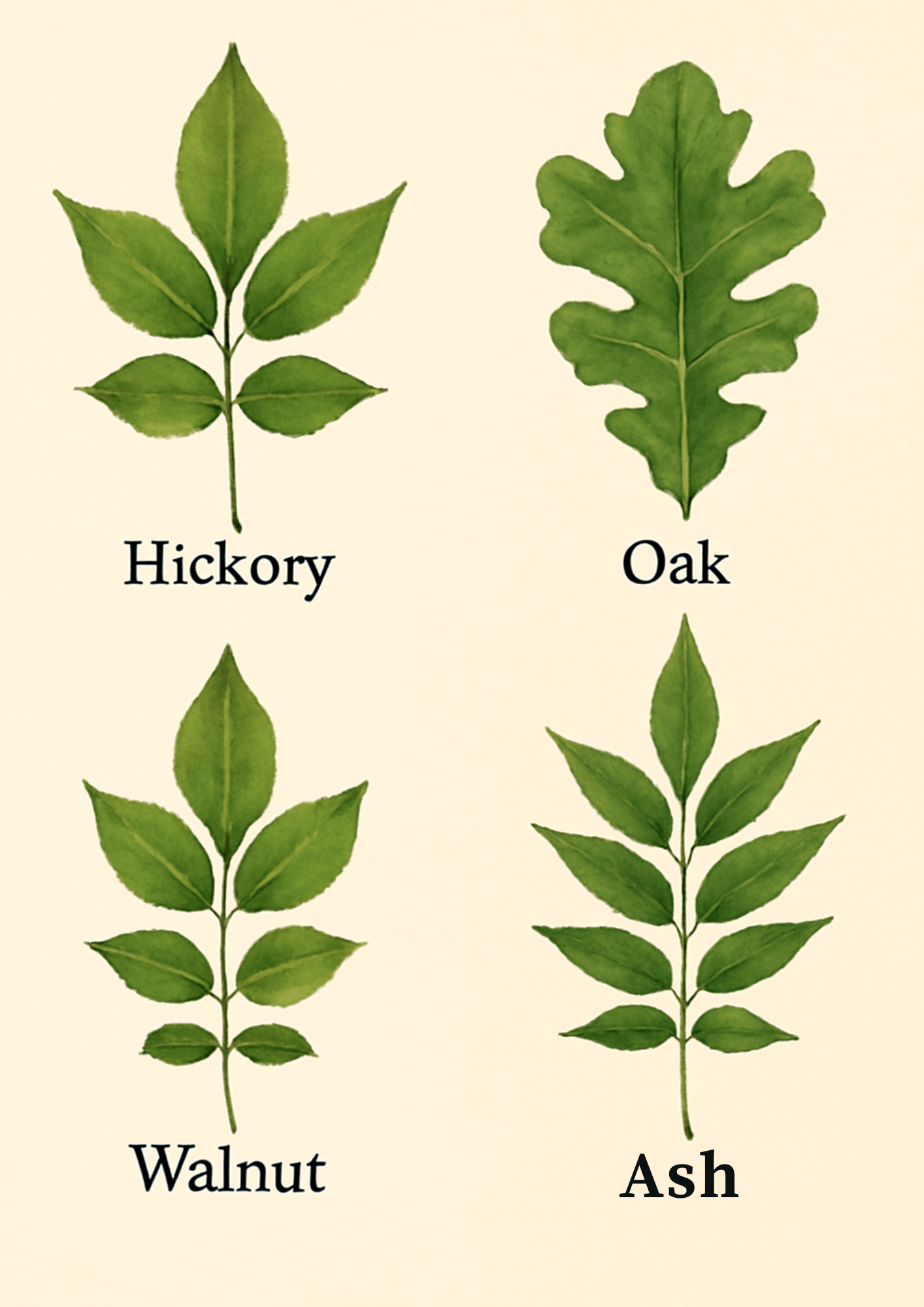
 1. Differences from Oak Leaves
1. Differences from Oak Leaves 
 Shape and Size
Shape and Size  :
:
- Hickory leaves are typically longer and narrower, with a more elongated shape. They can range from 6 to 10 inches long, giving them a sleek, sharp look.
- Oak leaves, on the other hand, tend to be broader and have more rounded lobes. Their shape is more irregular compared to the pointed, serrated edges of hickory leaves.
 2. Differences from Walnut Leaves
2. Differences from Walnut Leaves 
 Leaflets Count
Leaflets Count  :
:
- Walnut leaves generally have 15-23 leaflets arranged along a central stem, making them much longer and with a more uniform appearance.
- Hickory leaves, however, have fewer leaflets (typically 5-9), but they are more finely serrated, giving them a distinctive texture.
 Texture
Texture  :
:
- Walnut leaves are smoother and have a more uniform surface, while hickory leaves are rougher, especially on the top side.
 3. Differences from Ash Trees
3. Differences from Ash Trees 
 Shape and Structure
Shape and Structure  :
:
- Ash tree leaves have a more uniform and simpler structure, often with 7-13 leaflets arranged in a straight line.
- Hickory leaves are more variable in shape, with jagged, serrated edges and a more irregular, uneven look. The leaflets are attached to a central stem and give a compound leaf structure.
 Leaf Texture
Leaf Texture  :
:
- Ash leaves have a smoother, consistent texture, while hickory leaves are more rugged and coarse to the touch.
By keeping these distinguishing features in mind, you’ll be able to confidently identify hickory trees and differentiate them from other common tree species. Happy tree spotting!
 Seasonal Changes and Hickory Tree Leaf Identification
Seasonal Changes and Hickory Tree Leaf Identification 
Hickory tree leaves go through noticeable transformations throughout the year, making it easier to identify them during different seasons. Here’s a look at how hickory leaves change from spring to winter:
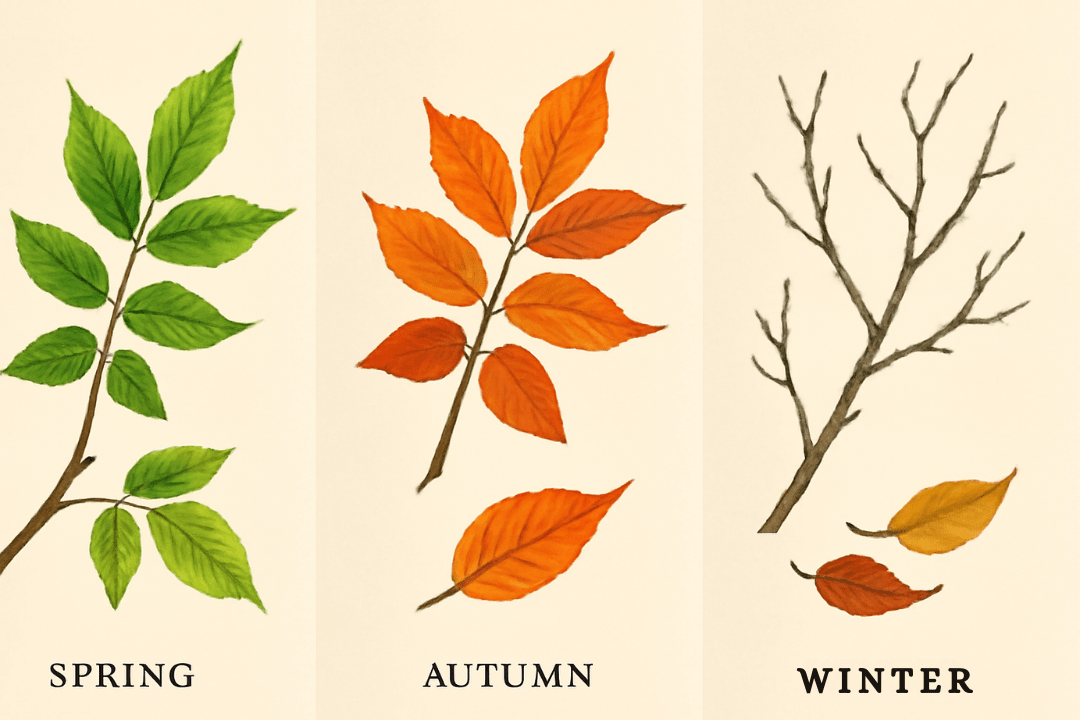
 Spring to Summer
Spring to Summer 
 Bright Green Leaves
Bright Green Leaves 
During the spring and summer months, hickory leaves are a vibrant, dark green 



 Autumn
Autumn 
 Color Changes
Color Changes 
As autumn sets in 







 Winter
Winter 
 Leaf Drop
Leaf Drop 
By winter 







 Bare Branches
Bare Branches 
Once the leaves have dropped 


Recognizing these seasonal changes in hickory trees 





 Common Mistakes to Avoid When Identifying Hickory Tree Leaves
Common Mistakes to Avoid When Identifying Hickory Tree Leaves 
Identifying hickory tree leaves can be tricky, especially for beginners. To help you avoid common errors, here are some practical tips to keep in mind when distinguishing hickory leaves from other species. By following these pointers, you’ll increase your chances of identifying hickory trees correctly and confidently.
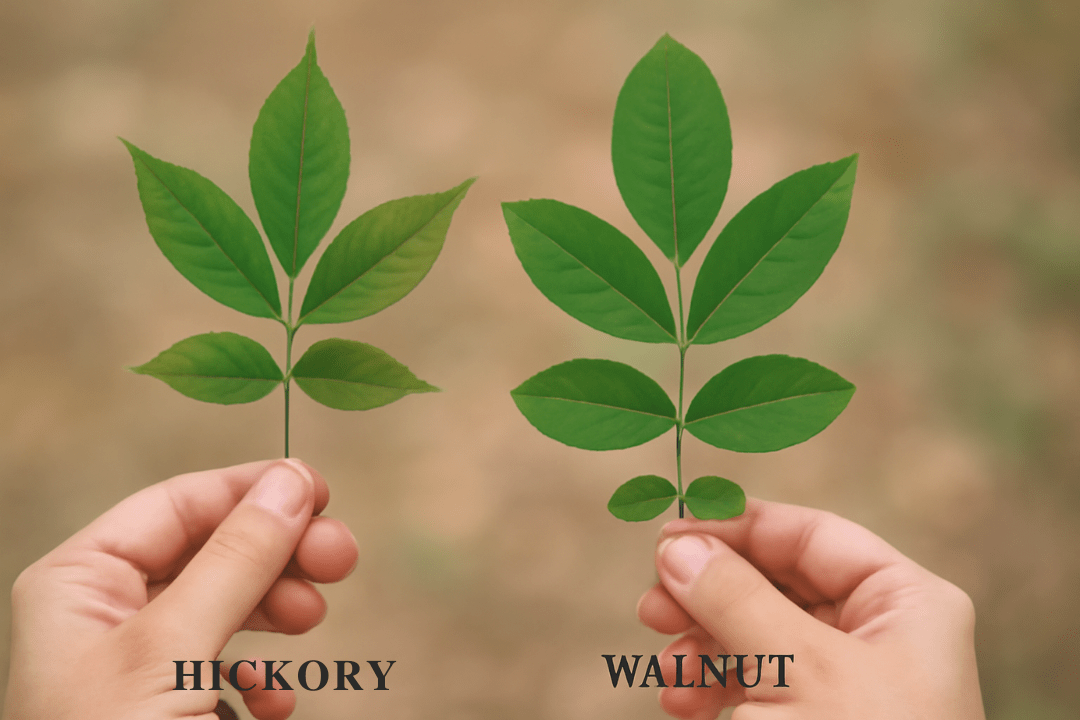
 1. Confusing Hickory Leaves with Other Similar Species
1. Confusing Hickory Leaves with Other Similar Species 
One of the most common mistakes is confusing hickory leaves with those of other tree species, such as walnut or ash trees. While hickory leaves can look similar to these trees, there are key differences. Hickory leaves have a distinctive, elongated shape 


 2. Ignoring the Leaf Arrangement
2. Ignoring the Leaf Arrangement 
Not paying attention to the leaf arrangement on the branch can lead to misidentification. Hickory trees have alternate leaf arrangements 

 3. Overlooking the Leaf Texture and Shape
3. Overlooking the Leaf Texture and Shape 
Another mistake is focusing too much on the leaf’s color 




 4. Misjudging the Leaf Size
4. Misjudging the Leaf Size 
Hickory leaves can be quite large 




 5. Forgetting About Seasonal Changes
5. Forgetting About Seasonal Changes 
Hickory trees have leaves 







 6. Overlooking the Hickory Nut
6. Overlooking the Hickory Nut 
Many people forget to check for the hickory tree’s distinctive nut 



By avoiding these common mistakes 





 How to Identify Hickory Tree Leaves Using a Leaf Key
How to Identify Hickory Tree Leaves Using a Leaf Key 
Identifying hickory tree leaves becomes much easier when you use a step-by-step process. Here’s how you can quickly and accurately identify these leaves with a leaf key:
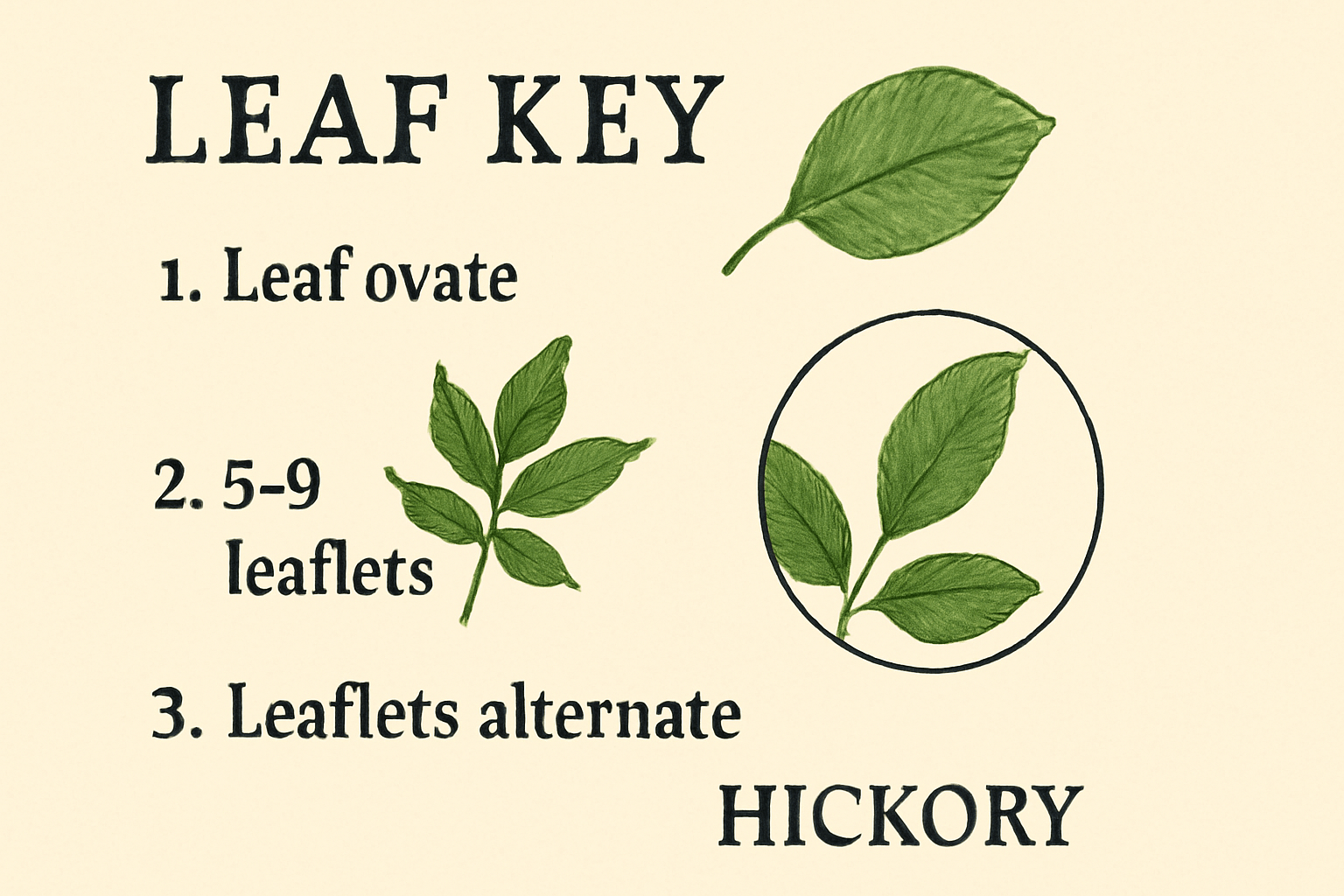
 Step 1: Leaf Shape
Step 1: Leaf Shape 
Start by looking at the shape of the leaf 



 Step 2: Leaflet Count
Step 2: Leaflet Count 
Next, count the number of leaflets 




 Step 3: Leaf Arrangement
Step 3: Leaf Arrangement 
Pay attention to the leaf arrangement on the stem 





 Step 4: Other Indicators
Step 4: Other Indicators 
Look for additional characteristics such as the texture of the leaf 







 Using Online Tools and Guides
Using Online Tools and Guides 
If you’re still unsure, there are several online tools 





By following these simple steps and utilizing available resources 
 Final Thoughts
Final Thoughts 
Identifying hickory tree leaves doesn’t have to be a daunting task 




Remember, practice makes perfect! 






So, next time you’re out in nature 


Frequently Asked Questions (FAQs)
How do I identify a hickory tree leaf?
To identify a hickory tree leaf, look for elongated leaves with serrated edges and a compound structure (multiple leaflets). The leaflets typically range from 5 to 9, with the central leaflet being the largest. Hickory leaves are also alternate along the stem, and the leaves feel rough to the touch. 🌿
What do hickory tree leaves look like in the fall?
In the fall, hickory tree leaves often change color to yellow, brown, or red. While color is an indicator, don’t rely solely on it for identification, as many trees also display these colors in autumn. Check the shape and texture of the leaves to confirm it’s a hickory. 🍁
Can hickory leaves be confused with other tree species?
Yes, hickory leaves can be confused with those of walnut or ash trees, especially when they are not fully mature. However, hickory leaves are typically larger, have sharper serrations, and the leaflets are arranged alternately along the branch, which can help distinguish them. 🌳
How many leaflets does a hickory tree leaf have?
A hickory tree leaf usually has 5 to 9 leaflets, depending on the species. The central leaflet is typically the largest, with the others gradually decreasing in size towards the end of the rachis (central stalk). 🌿
Are hickory tree leaves smooth or rough?
Hickory tree leaves have a rough texture, unlike the smooth or waxy surface of some other trees like maple. They may feel slightly hairy or coarse when you run your fingers along them. 🌱
What are the main characteristics of a hickory tree leaf?
The main characteristics of a hickory tree leaf are elongated shape, serrated edges, 5 to 9 leaflets, and alternate leaf arrangement along the stem. The leaf also has a rough texture and may change color in the fall to shades of yellow or red. 🍂
How can I differentiate between a hickory tree and a walnut tree?
Hickory tree leaves are larger and have sharper serrations than walnut tree leaves. Additionally, hickory trees have alternate leaf arrangements, while walnut trees typically have opposite leaf arrangements. Walnut leaves are also less rough compared to the coarse texture of hickory leaves. 🌳
Can online tools help identify hickory tree leaves?
Yes, online tools like Leafsnap and PlantNet are great resources for identifying hickory tree leaves. Simply upload a photo, and these apps will help confirm whether you’re looking at a hickory or another tree species. They can be particularly useful when you’re unsure of the leaf’s characteristics. 🌍📱







